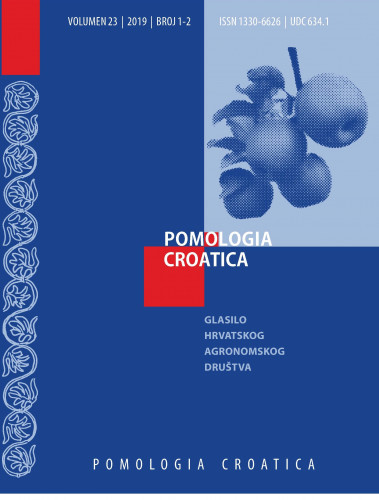Vodice su jedinica lokalne samouprave u području Šibensko kninske županije. Područje grada Vodica može se podijeliti u tri zasebne cjeline (otočna, obalna i zaobalna ili zaleđe grada). Poljoprivreda je osnovna gospodarska djelatnost stanovništva cijelog područja, a maslinarstvo doživljava svoj procvat u posljednjih dvadesetak godina. Posebno je zapažen brz razvoj maslinarstva u zaobalnom dijelu grada Vodica. Prije Domovinskog rata u području vodičkog zaleđa vodeće poljoprivredne grane bile su vinova loza, žitarice i stočarstvo. Zahvaljujući nizu mjera i aktivnosti poduzetih od strane države i lokalne zajednice u proteklih dvadesetak godina došlo je do značajne promjene strukture poljoprivredne proizvodnje tako da su maslina i vinova loza postale vodeće poljoprivredne grane u ovom području. Upotrebom kartografskih podloga, podataka iz ARKOD upisnika, drugih dostupnih podataka i terenskim istraživanjima utvrđeno je stanje maslinarstva na istraživanom području. Unatoč dobrim rezultatima na razvoju maslinarstva postojeće stanje nije zadovoljavajuće te se može zajedničkim aktivnostima i mjerama različitih dionika u lancu vrijednosti značajno unaprijediti. Danas postoje dobre perspektive razvoja maslinarstva i proizvodnje vrlo kvalitetnih maslinovih ulja u ovom području. Posebno je potrebno poraditi na plasmanu maslinovog ulja što se velikim dijelom može odvijati kroz turizam.; Vodice is as unit of local self-government in the Šibenik Knin County. The area of Vodice can be divided into three separate units (island, coastal and off-shore or the outskirts of the town). Agriculture is the main economic activity of the entire population in the county and olive growing has been experiencing its boom in the last twenty years. Particular attention is paid to the rapid development of olive growing in the off-shore part of Vodice. Prior to the Homeland War in the hinterland, the leading agricultural branches were grape vines, grain and livestock. Thanks to a series of measures and activities taken by the state and the local community over the past twenty years, there has been a significant change in the structure of agricultural production so that olive and grape vines have become the leading agricultural branches in this area. Using the mapping background, the data from the ARKOD registry, other available data and field research, the condition of olive growing in the exploration area was determined. Despite good results in the development of olive growing, the existing situation is unsatisfactory and the joint activities and measures of various participants in the value chain can be significantly improved. Today, there are good prospects for the development of olive growing and production of high quality olive oils in this area. It is specifically necessary to work on the distribution of olive oil that can largely be developed through tourism.
Sažetak

 Pomologia Croatica : glasilo Hrvatskog agronomskog društva : 23,1-2(2019) / glavni i odgovorni urednik, editor-in-chief Krunoslav Dugalić.
Pomologia Croatica : glasilo Hrvatskog agronomskog društva : 23,1-2(2019) / glavni i odgovorni urednik, editor-in-chief Krunoslav Dugalić.